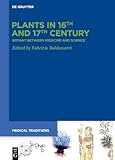Plants in 16th and 17th Century : Botany between Medicine and Science / ed. by Fabrizio Baldassarri.
Material type: TextSeries: Medical Traditions : The Written Memory of World Medicine ; 8Publisher: Berlin ; Boston : De Gruyter, [2023]Copyright date: ©2023Description: 1 online resource (XIII, 263 p.)Content type:
TextSeries: Medical Traditions : The Written Memory of World Medicine ; 8Publisher: Berlin ; Boston : De Gruyter, [2023]Copyright date: ©2023Description: 1 online resource (XIII, 263 p.)Content type: - 9783110739664
- 9783110740004
- 9783110739930
- 581.7
- online - DeGruyter
- Issued also in print.
| Item type | Current library | Call number | URL | Status | Notes | Barcode | |
|---|---|---|---|---|---|---|---|
 eBook
eBook
|
Biblioteca "Angelicum" Pont. Univ. S.Tommaso d'Aquino Nuvola online | online - DeGruyter (Browse shelf(Opens below)) | Online access | Not for loan (Accesso limitato) | Accesso per gli utenti autorizzati / Access for authorized users | (dgr)9783110739930 |
Frontmatter -- Acknowledgments -- Contents -- List of Illustrations -- List of Contributors -- Foreword -- Introduction: The World of Plants in Premodern Medical Knowledge -- A More Modern Order: Virtual Collaboration in the Roccabonella Herbal -- Mediterranean Botany. Making Cross-Cultural Knowledge about Materia Medica in the Sixteenth Century -- A Bridge to the Underworld? An Explanation of the Act of Digging up Plant Roots in Early Modern Medical Fictions -- Not just a Garden of Simples: Arranging the Growing Floristic Diversity in the Leiden Botanical Garden (1594–1740) -- From the Analogy with Animals to the Anatomy of Plants in Medicine: The Physiology of Living Processes from Harvey to Malpighi -- Opium Taking: Blurring Experimentation and Pharmaceutical Theories -- The Accommodation of New World Plants in Early Modern Pharmacology: The Case of Cinchona Bark and the Challenges to Seventeenth-Century Galenism -- Knots in a Web: Botany, Materia Medica, and South Asian Languages in the Publication of Paul Hermann’s Ceylon-Herbaria (ca. 1690–1770) -- Bibliography -- Index
restricted access online access with authorization star
http://purl.org/coar/access_right/c_16ec
In the pre-modern times, while medicine was still relying on classical authorities on herbal remedies, a new engagement with the plant world emerged. This volume follows intertwined strands in the study of plants, examining newly introduced species that captured physicians' curiosity, expanded their therapeutic arsenal, and challenged their long-held medical theories. The development of herbaria, the creation of botanical gardens, and the inspection of plants contributed to a new understanding of the vegetal world. Increased attention to plants led to account for their therapeutic virtues, to test and produce new drugs, to recognize the physical properties of plants, and to develop a new plant science and medicine.
Issued also in print.
Mode of access: Internet via World Wide Web.
In English.
Description based on online resource; title from PDF title page (publisher's Web site, viewed 06. Mrz 2024)


